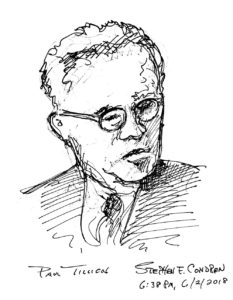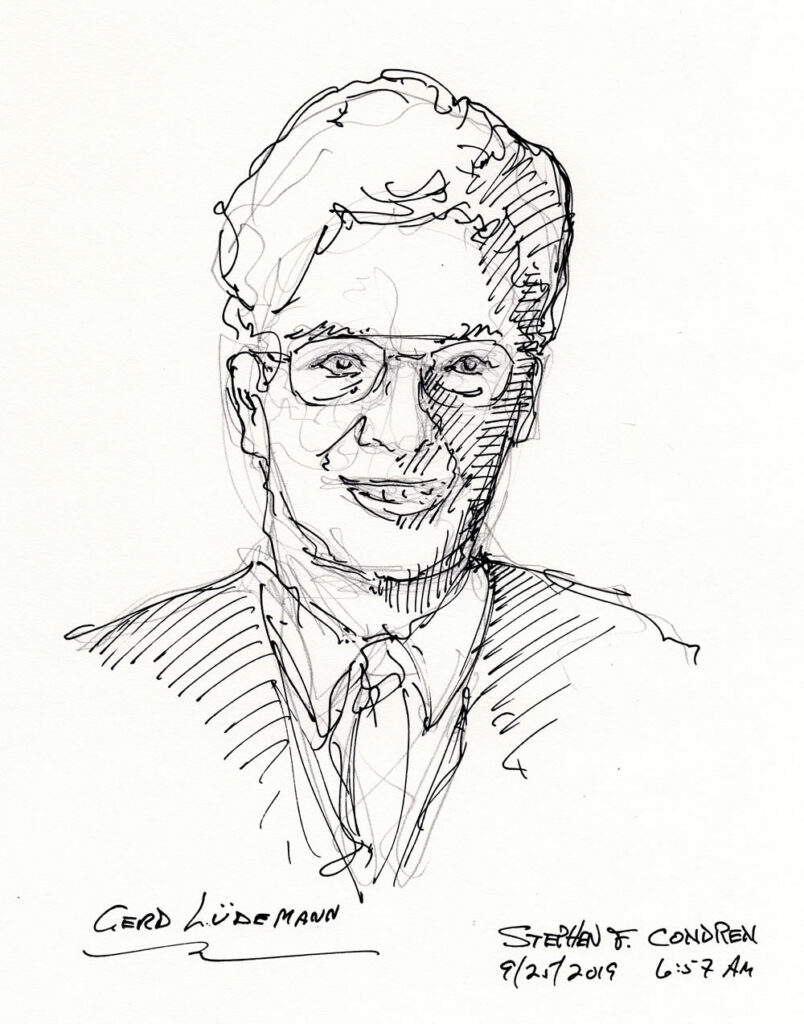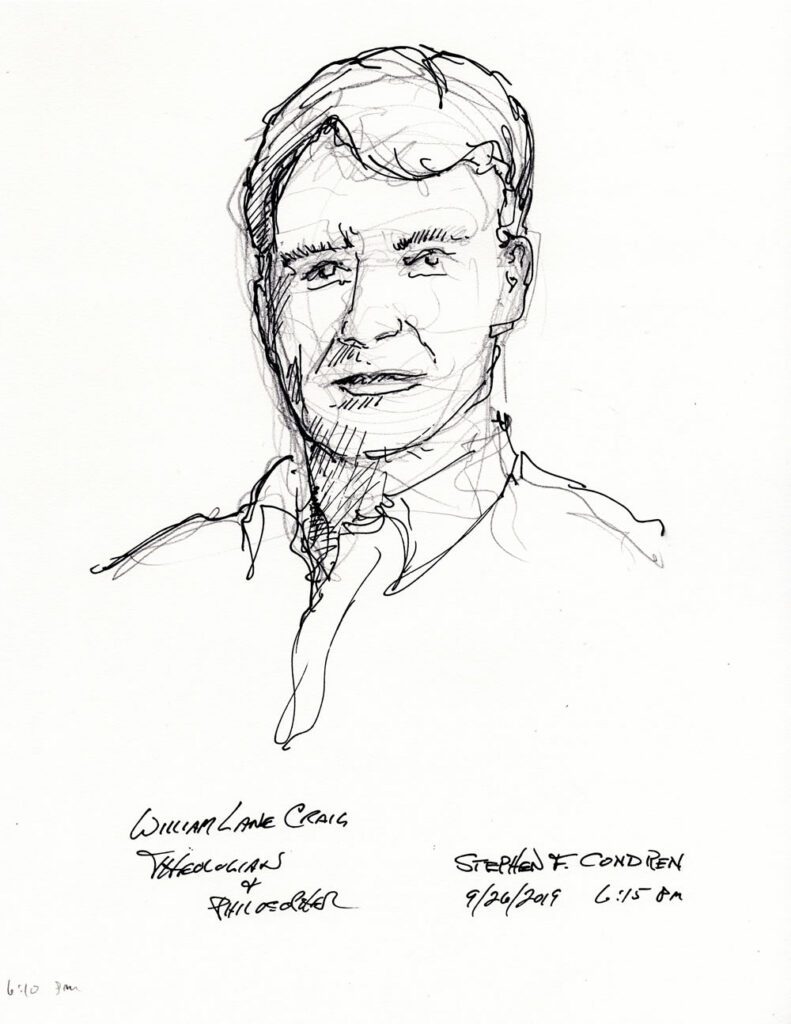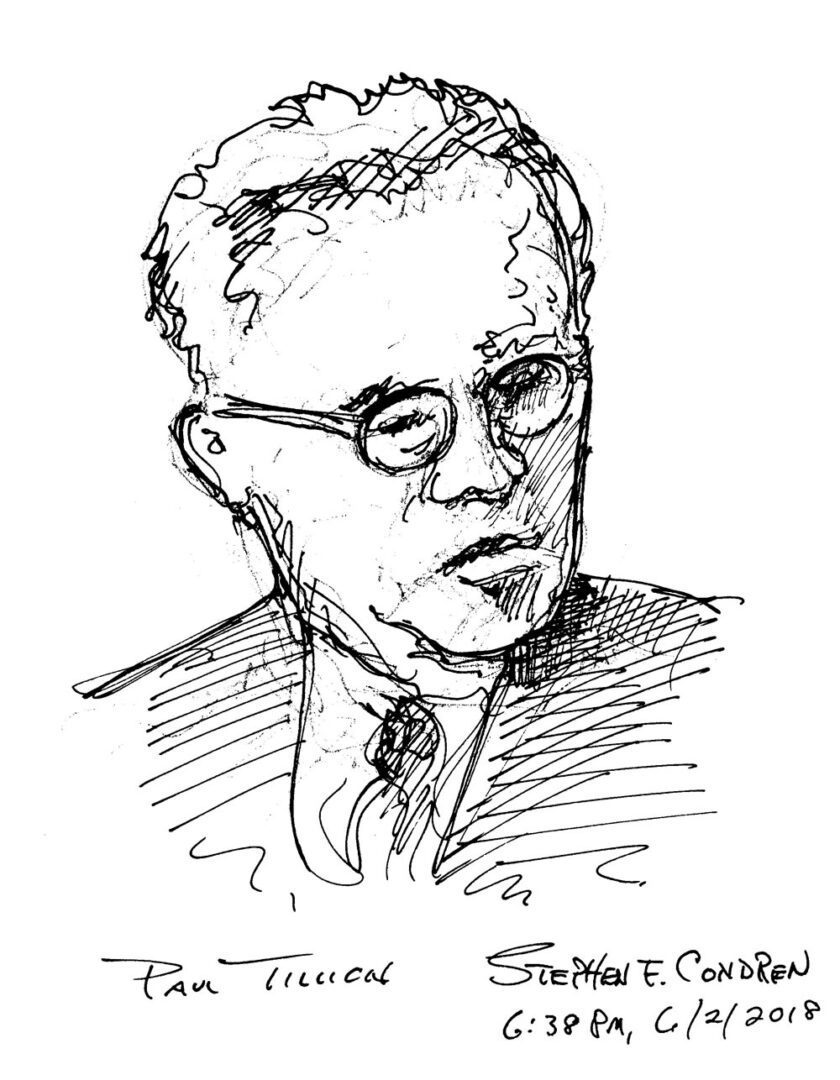
This article is about the Systematic Theology #6000Z of Dr. Paul Tillich by artist Stephen F. Condren, SAIC.
Introduction
My approach to the Systematic Theology #6000Z of Dr. Paul Tillich is one of a Humanist and an Artist (an Artist above all). I will be using and siting from the University of Chicago Press edition. Like all human beings we approach a topic with predispositions and an infinite array of subconscious states of being that affect our view and understanding of that topic. Further, my perspective comes from that of my Irish Catholic background which has an enormous impact on all that I live by.
My approach to the Bible is via the Historical Critical Method stemming from Hermann Samuel Reimarus, through Albert Schweitzer, and Norman Perrin. I do not hold to the myth that the Bible is the inspired word of God, rather, I hold it as a document. The impact and place that this document has offered the West are incalculable, with results being made manifest in the Arts, History, and culture of Western Civilization. However, the Bible is just a book, and for those that want to hold it aloft in triumph as something other than this, so be it. However, the Bible is only a book, and can only ever be a book, and nothing more, because it is made by men and it is based on flawed ideas, perspectives, and words of mortal men.
Critique
I will now do a critique of this great work of Dr. Tillich section by section giving you my perspective on his Theology. I am not doing a critique of the Introduction. Below I quote the text.
Reason And The Quest For Revelation
A. The Structure Of Reason
- The Two Concepts Of Reason
“Epistemology, the “knowledge” of knowing, is part of ontology, the knowledge of being, for knowing is an event within the totality of events. Every epistemological assertion is implicitly ontological. Therefore, it is more adequate to begin an analysis of existence with the question of being rather than with the problem of knowledge. Moreover, it is in line with the predominant classical tradition. But there are situations in which the opposite order ought to be followed, namely, when an ontological tradition has become doubtful and the question arises whether the tools used in the creation of this tradition are responsible for its failure. This was the situation of ancient probabilism and skepticism in relation to the struggle between the philosophical schools. It was the situation of Descartes in the face of the disintegrating medieval traditions. Was the situation of Hume and Kant with respect to the traditional metaphysics. It is the perennial situation of theology, which always must give an account of its paths to knowledge because they seem to deviate radically from all ordinary ways. Although epistemology precedes ontology in these instances, it is an error to assume that epistemology is able to provide the foundation of the philosophical or theological system. Even if it precedes the other parts of the system, it is dependent on them in such a way that it can be elaborated only by anticipating them explicitly and implicitly. Recent Neo-Kantian philosophers recognized the dependence of epistemology on ontology and contributed to the fall of the epistemological tidal wave which arose in the second half of the nineteenth century. Classical theology always has been aware that a doctrine of revelation presupposes doctrines of God, man, Christ, etc. It has known that the epistemological “preamble” is dependent on the whole of the theological system. Recent attempts to make epistemological and methodological considerations an independent basis for theological work have been futile. Therefore, it is necessary that the systematic theologian, when he begins with the epistemological part (the doctrine of Reason and Revelation), should indicate clearly the anticipations he makes both with respect to Reason and with respect to Revelation.”
Paul Tillich, Systematic Theology, University of Chicago Press. Pages 71 & 72.
Critique
There is much good and much not needed in the opening lines. When we are talking about “revelation” you are entering a very broad and vast arena that has literally endless possibilities. Both terms, “Revelation” and “Reason” are in all actuality not attainable by the human being. The down side of this Classical framework it the total absence of the clinical mind, for above all thing people are chemical beings. To commence the work on a quest for revelation would in my view have to start with the subconscious and clinical elements that impact this topic. I call this the backwards or Mortimer J. Adler approach to thought. Though I have great admiration for Adler and the Great Books as well, to approach these writings as a modern day resource is looking the wrong way, we need to look to the future and see what it has to offer.
It is very easy to bring up the concept of Epistemology and Ontology, but more importantly, it is how you place them into the context of the subject at hand that become difficult. I do not argue with either subject but I do argue with bring them into the arena of revelation and any kind of quest for it.
Revelation
What actually is revelation? As much as we do not know what were the causes of the French Revolution with all the vast amount of facts that we have before us. How much more difficult is it to define revelation from a document (the Bible) that has absolutely the most dubious sources to work with. What is then revelation? The various stories and adages floating in the earliest of oral traditions at the time right after the death of Christ that only form the backdrop of the vast and story world of the drama that is to unfold. Is one oral story a revelation and another not? Even the vert fabric and intonation of each oral phrase is imbued with ambiguities and a bevy of meaning. Who can really say what revelation is, especially in context to the Bible.
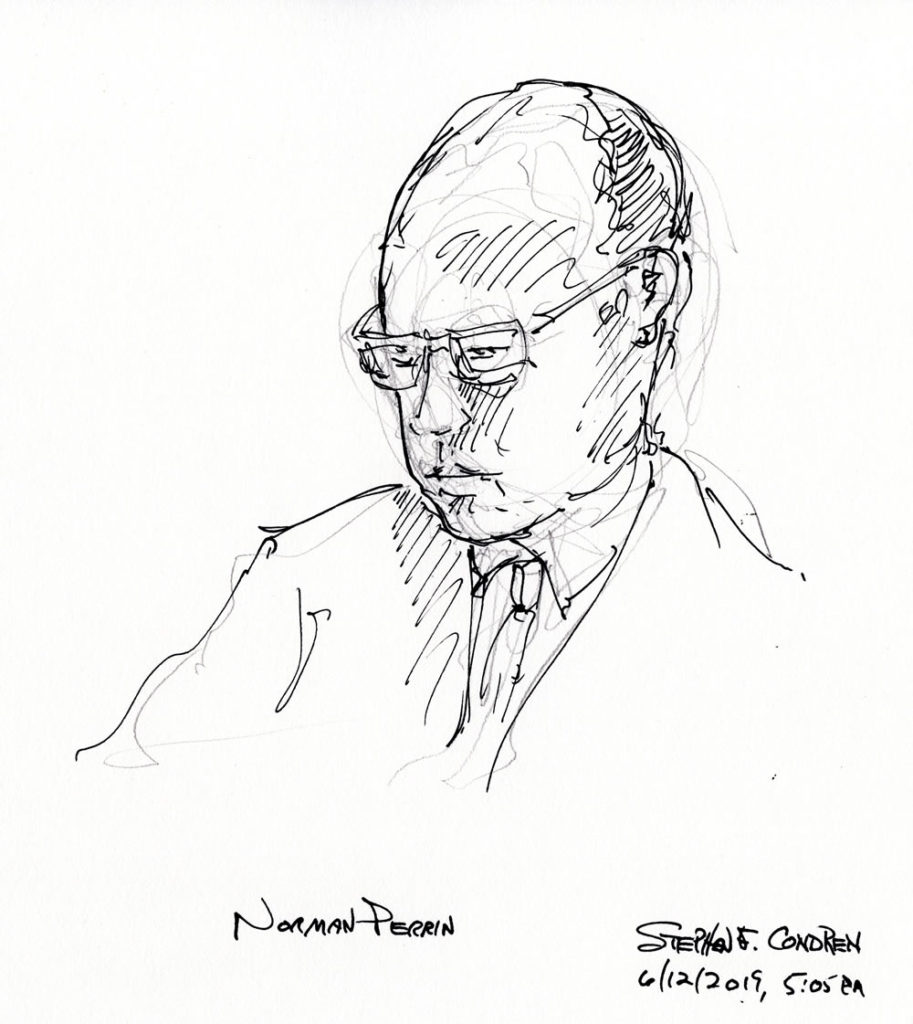
Bible worship is a sick and depraved thing that only degrades and distorts the message that lies therein. For as the editors of the Gospel of St. Luke clearly say from the very beginning “Inasmuch as many have undertaken to compile an account of the things accomplished among us, just as those who from the beginning were eyewitnesses and servants of the Word have handed them down to us,” Luke 1 & 2, NASV. This is an account, and nothing more.
Purpose Of Theology
The purpose or task of Theology is to make (in this case Christianity) religion meaningful and understandable to the vast spectrum of humanity. That means from the highest ranking scholars, and academic institutions to those who cannot even read or suffer from a host of physical and mental disorders.
That being said, it does not mean that a Church, University, or Theological institution is to use Church traditions, creeds, and doctrines to set an agenda that serves it’s own needs. Rather, it is the task of these entities to serve the public.
Above all things Theologians must look forward and incorporate that which is happening right now is society and address the needs of the people in terms of the Church’s mission. The Theologian must look forward not backwards. It is fine to refer to St. Augustine, or Thomas Aquinas, however, these men’s works have very little in common with the needs of today. To my knowledge Alaric is not sacking New York City at the present (well maybe Trump Tower). St. Augustine’s City of God aptly served the needs of 410 AD but not the needs of the 21st Century.
Hermeneutics
The difficulty with the Bible, like any document, is that it is subject to Hermeneutics, and thus with a few strokes of a pen I can make the Bible say anything that I want it to say. A case in point that I always refer to is the Constitution of the United States. This small document is battled over, hashed over, and interpreted in a vast array of light in courts every day with no common consensus by anyone or any party at anytime for the content of it is too vast and fecund with meaning. Now put into perspective this small document in juxtaposition to a tome like the Bible and you have an exponential expansion of interpretations and opinions that are ever expanding. Who will dare bring meaning? Will dare gather consensus? Who will dare attempt to offer a clearer perspective?
Interpretation
As a lover of opera, I very well know that no two sopranos sing the Liebestod in the same way. The vast and endless array of interpretations ever expands with each new generation. Who will dare to say that Kirsten Flagstad is a better interpreter of Wagner than Birgit Nilsson? Is Herbert von Karajan a finer conductor possessing better knowledge and understanding of music than Sir Georg Solti? So too with David Tracy over Martin Marty?
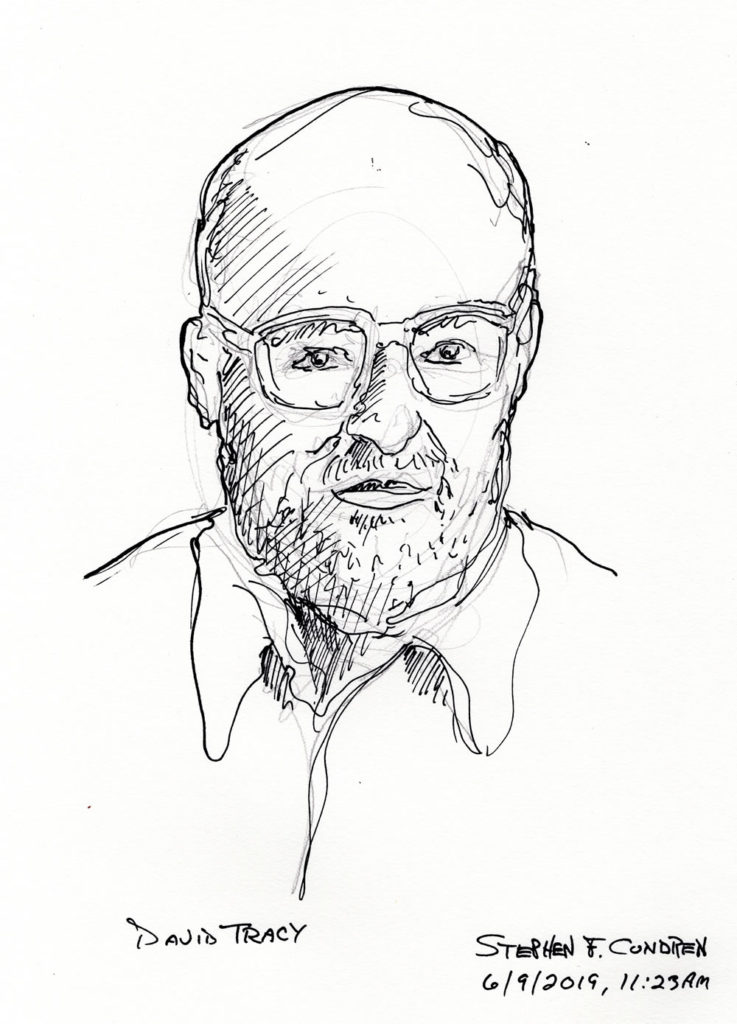
Perspective
The very weakness that you have with Paul Tillich, as with Albert Schweitzer, Rudolph Bultmann, and Karl Barth (Swiss Reformed) is that they take the Bible too seriously because they were Lutherans (save Barth). Thus their Protestant background has clouded their perspective and made much to do about nothing. The bottom line is Church authority, not the Bible.
Tragically the greatest error that lies in the works of Rudolph Bultmann are his attempts to demythologize the Gospel accounts. This is just wrong on all accounts, for the miracles, and fables are an inextricable element to the very fabric of the story line and their removal destroys everything. He is trying, in vain, to rationalize that which is purely irrational, new wine put into old wine skins. Keep all the fables and miracles and then you will have a better understanding of the message. The message is the key not the vehicle. To get a bottle of beach to “clean-up” and “fix” the originals, by rubbing out the miracles only exacerbates the mission. You need to grasp the storyline with the miracles to make sense of the times. Miracles were authoritative, and gave credence, and credibility to any writing or circumstance. Even now the Roman Catholic Church requires at least two miracles to establish the credibility for a saint to be canonized. St. Fulton Sheen is on the way.
This is not to say that you have to believe in miracles, I do not for a moment, nor would I ask anyone else to. However, I do want a cogent understanding of the text and just like Capablanca said about pawns: just leave them alone.



I grew up at 6841 S. Bennett Avenue, in the Jackson Park Highlands in South Shore, Chicago, in the shadow of the University of Chicago. Fortunately in my case I was brought up from Irish ancestry, a Roman Catholic in private Catholic Schools. St. Philip Neri Parish in South Shore, Chicago, and Mendel Catholic High School in Roseland, Chicago. Thus I do not suffer the pains of Bible worship and certainly not the out right folly of Moody Church, and Wheaton Bible Church which I had attended at length with earnest after my Spiritual awakening on August 11, 1973.
Mission
The mission of Jesus (not Christ) was not to found a new religion, but rather to re-establish the earthly Kingdom of David so as to extract Rome from the Holy Land. There was no physical resurrection of any kind but rather the creation of a newer and higher religion to use the words of Albert Schweitzer, and he was absolutely correct. Jesus had his focus with the people of Israel and did all of his preaching to the Jews, either in the synagogue or in the fields. Jesus was never well received in the city because he could not manipulate the people. It is easier to swindle the less education in rural areas. Do not be fooled, Jesus was a swindler. See Gerd Ludemann, “Der grosse Betrug”. This is the same pattern of evangelical seminaries and colleges, as they too are rarely in the city but hide out on the suburbs and rural areas untainted. An evangelical student would be crushed and “lose his faith” if he were to attend the University of Chicago Divinity School. Like Galileo, Jesus was the loser and Rome the winner.
Clearly the mission of Jesus, John the Baptist, the Essenes, and other marginal groups were to muster up a grass-roots movement that would empower local members of the synagogues to united and stand up against Rome. All of this was of course treason, and in the end cost them with their due penalty. Since the caucus was early and smaller with John the Baptist, the real leader and organizer of the movement, Herod was able to “keep it in the classroom” and deal with the Baptist himself. However, Herod’s handling of John the Baptist only exacerbated the patriotism of the movement which made it foment and gather strength, which it did under the second-in-command, Jesus. However, due to the size and continued strength of the grass-roots movement, Herod was not able to “keep it in the classroom” as it gained attention in the principle’s office, Pontius Pilate, and the rest is history.
St. Stephen
Everything lies on St. Stephen, for he is the one that is ushering in the new world order, the higher religion, and St. Paul was his messenger. St. Stephen was all theological whereas St. Paul was nothing of the sort, rather a good precursor to John Calvin. Stephen means crown of the victor giving both a clear and a subliminal message that Christ not Jesus is the savior. The fictitious person that played the role of St. Stephen in the Acts of the Apostles, was merely a pawn to be used for his name. He had to be named Stephen to drive home the meaning of the “Crown of victory” that was being ushered in. Jesus had to be crowned with a stephanos (not a diadem, for that was the hereditary crown of the king) otherwise there would be no Christianity, for Christianity commences with the crown on Jesus’s head, which at that very moment becomes Christianity. Without Stephen there is no victory because the victory is in the following of Christ, not believing that He rose from the dead. Faith in Christ has little to do with any kind of resurrection, which was really a side issue. In other words, there was never any kind of demand for followers to believe that a dead body would physically rise from the grave and resume daily life, that would be sheer nonsense to anyone of that time. There is no talk of this in any of Jesus’s messages. In fact, if the resurrection were so crucial, and so fundamental to the teachings and belief systems of Jesus, why is it never mentioned in His teaching in the Gospels prior to the Transfiguration? It is only after the fact that this all comes about. Further, the very size and position of St. Stephen’s narrative is daunting. There is nothing like it in all of the Bible. Now ask yourself, why such a long and replete account by such a diminutive figure? However, like the leitmotiv of the rainbow in Das Rheingold, it only appears once and briefly, but with such majesty! The answer is clear, for the size and scope of the St. Stephen’s speech is the “heads up” to all that have ears, offering the path to Valhalla. The editorial committee of Acts of the Apostles is hitting you hard over the head with a big club driving their point firmly home. But everyone completely looks over this in favor of his martyrdom.
Gospels Written Backwards
It is very important to grasp that the Gospels were written backwards. Thus, the editors knew the end of the plot and filled in “clues” along the way for the reader to make sense of the drama. Just like Matthew 16:18, it was all put in later by the editorial committee. What resurrection message is in the sermon on the mount, or calming of storms, or walking on water? None. The key is continued life after you die, and not this body being made immortal. Jesus’s body never rose from the grave, He merely passed on to the next life upon His death on the cross. The spiritual life with God after you die is the message of Christ not Jesus. Jesus’s teachings were merely ethical messages and guidelines to live by. Nowhere in the Gospels does Jesus even suggest the concept of corpses being physically raised from the dead (like zombies) as an example of life after death for those that follow Him and His teachings. That sounds rather creepy if you ask me. Rather, all of Jesus’s teachings on the topic of God and the hereafter are very abstract and vaporous, offering nothing concrete or physical whatsoever. All of the talk about the dead in Christ rising first comes from the editorial committee of the Pauline corpus, as St. Paul is an imaginary figure used by the committee as a tool to expand the ethereal message of St. Stephen, which is salvation through faith in Christ, and not believing in Jesus and getting a new eternal physical body as a fringe benefit.
Hellenistic Jews
The Greeks understood Philosophy far better than the Jews, hence the Hellenistic Jews gave us the Gospel of John, and the Johannine corpus.
Lost Documents
It should be noted that much of St. Stephen’s speech is lost for the history is not complete. Further, his coda, or recapitulation at the end of the speech is also lost, leaving us only a fragment that makes up his few last words. For there is nothing in the history or his final words that would have cut to the quick (Acts 7:54) the council of the Synagogue of Freedmen. What St. Stephen said after the history to enrage the Freedmen is lost.
Where Does Our Risen Body Live?
A major question that is never addressed is why is Jesus’s physical body living in the heavens? Acts 1: 9,10. It makes no sense whatsoever that a physical body like the ones that we possess now should live in outer space. Our bodies were designed to live firmly on the ground, here on planet earth. To cast our bodies up into outer space would only have them destroyed by cosmic rays, and radiation, for starters. How does one eat, excrete, and change underwear in outer space? And what of clothing, should not our risen bodies be naked or does clothing posses a soul as well? Heaven, if there is one, should be ethereal not physical, thus too our bodies. The concept of a physical flesh and blood body floating in the outer stratosphere or galaxy is sheer folly, and boring as all get out. If there is life after death it is ethereal. This does not hold water in any Scientific circles, but it was just fine back in antiquity where they thought that the earth was flat, and took as real the myths of Noah’s Ark and the Flood, and Adam & Eve. At these times people had no knowledge of the subconscious, genetics, and Space-Time Continuum. 1,000,000,000 centuries from now, when the earth is pulverized with nuclear waste, and the son is a burned out cinder, where will our bodies dwell?
Septagram
- Jesus. Jesus, a real flesh and blood person, preaching to the people to emancipate Israel from the Romans, and not to found a new religion. He died on the cross, a failure, and did not rise from the dead, or the grave. Jesus is the anthropomorphic element needed to place the crown (stephanos) on.
- Christ. Christ, an ethereal Being created by the early Church with aid from Greek Philosophy and Gnosticism, promulgating salvation from death by offering eternal life by having faith in Him.
- St. Stephen. St. Stephen the catalyst that brings Jesus and Christ together as one entity being made manifest to the world, being the very essence of the crown of victory, (note all of the parallels between Jesus and St. Stephen. See my article on St. Stephen). Only St. Stephen has the power (Holy Spirit, Acts: 7,55) to bind Jesus and Christ the right hand of God) together to give to the world for all time Jesus Christ, because he is the very crown of victory, hence the name Stephen. Where the Spirit leaves the dead corps of Jesus on the cross, the crown of the living and eternal Christ enters. It is the crown (stephanos, the garland wreath of honor and victory) that gives life to Christ and secures the newer higher religion. Without the crown there is no Christ, no Christianity, no eternal life, and no new world order.
- Sacrifice. Everyone wrongly looks to the sacrificial blood of Jesus as the key to salvation, but they are all wrong. For the paschal lamb is dead and offers no life, as proved by the lifeless corps of the animal, and the futile repetition of the lame barbaric sacrifice. The paschal lamb was only a vicarious agent for the atonement and not a vehicle offering eternal life. Forgiveness of sins has nothing to do with eternal life. There is no record of any paschal lamb rising from the dead on the altar, which should have taken place, as anticipation and precursor of the up and coming resurrection of Jesus in years to come, if this were true. There is no life in bloodshed, only death, for when you see blood you see death.
- Crucifixion. The crucifixtion was never meant to be a sacrifice for there was no altar, and it was not sacred ground, or clean in any regard, as Jewish law demands. Suited only for a filthy and unfit sacrifice, the opposite of what the Gospel editors are strenuously trying to convey. For the blood of heathen Romans, and gentiles permeated the soils, making for a parcel of utter filth. For all the pain-staking care that the editors of the Gospels took to show Jesus as pure and undefiled throughout His career, and by both Pilate and Herod at His trial, they failed to carry through with their pristine depiction of Jesus at Golgotha, because it was very real, bigger than life, and they just could not hide it, control it, or explain it away, which makes the crucifixtion all the more authentic. This was a major literary flaw for the Gospel editors because crucifixion just does not work, does not fit into the context of Jewish sacrificial law, and exposes what Jesus and John the Baptist were all about. Since the Gospel editors could not hide it they tried to make it work, but it did not. Crucifixtion was a gruesome, horrific penalty for treason, a proof of failure, a public disgrace, and a display of male nudity, (Jesus wore no loin cloth), which was an abomination to the Jews and Romans alike. It took centuries of brainwashing on the part of the Church to “make it work” but it does not. For sure the crucifixion of Jesus was most assuredly real, but this does not give credence to the resurrection, or any kind of life after death. In complete contrast the crown is bloodshed free, carnal free, and triumphant, offering honor, glory, and eternal life.
- St. Paul. St. Paul, a tool of the early Church Pauline corpus editorial committee, hence the leitmotiv of verse Acts 7:58, as the key messenger of St. Stephen’s vision, that changed the failed mission of Jesus and migrates His cause to that of Christ to make sense of it by formulating a newer and higher religion palpable to all peoples. Thus, the real, authentic, earthly house of King David was transformed into the ethereal Kingdom of God in the heavens. Now Israel would again conquer and this time win as they have God on their side, and they are legions. Christianity is the triumph of Israel.
- Trinity. There is no Trinity.
Victory
The crown or wreath is the whole point of the story! The cross is for losers and Jesus crucified was a loser, and all images of the crucifix only display failure. There is no glory in this horrific, ugly, and raw form of execution. It is never “Christ Crucified” but rather “Jesus Crucified”.
Jesus was a loser from the get go, and Christ was the winner. The very mythological “fact” that Jesus was a man makes him a loser. Now the savior Christ, the winner, bares proof of His victory by wearing the stephanos, or garland wreath, of victory and honor. Christos Imperator.
Where Did Jesus Go?
The complication that has suffered the Church from the beginning has now been solved. For the Church did not, and still does not know how to grasp and formulate what happened to Jesus from the time of His death on the cross to His resurrection on Easter Sunday. The Apostles Creed, like all creeds, is lame. What the early Church failed to do was to grasp the work of St. Stephen, and thus conjured up descending into Hell as a way of giving the dead Jesus life after his death on the cross, and in the mean time, putting Him to task by having him work with the lost souls and those in purgatory and Hell until Easter Sunday, making his mission accomplished. Of course there was no descent into Hell, or anything like it. Like the fable of Adam & Eve, it was giving immediate answers to pressing questions of life and death ~ people demanded to know. St. Stephen never offered an architectural rendering of the risen Christ, what he did was to formulate a new concept, a concept still not understood.
The Spirit (Holy Spirit if you will) of Jesus left His body at the cross never to return. The time between Good Friday and Easter Sunday was the incubation of Christ. This time frame works for the early church because they could not have Jesus rising from the dead right on the cross in front of everyone, that would expose the failed mission of Jesus permanently, for it would not happen. Thus, staving off of the ressurection for a few days gives them time. There is no reason whatsoever that any kind of bodily ressurection should have to wait three days or be subject to any time frame at all. However, the anthropomorphic element needed to make manifest a new religion was not formulated.
Thus the entrance of St. Stephen as the crown of victory and eternal life, takes the dead Jesus and puts Him into life as Christ. St. Stephen successfully takes the dead corps of Jesus and gives the world a way to picture the ethereal Christ. St. Stephen foisted as the first martyr is totally irrelevant and setting the tone for a different agenda of the early Church. The purpose of St. Stephen was first and foremost to combine Jesus to Christ and deliver to the world a newer higher religion. To this day the manifestation of Jesus Christ is not understood and rendered incorrectly both Theologically and artistically. You cannot render Jesus’s image after His death because He no longer has a body, for He is now part of a vast Luminiferous Eather unseen to all. The Anthropomorphic body of Christ after Jesus’s death was the best way to explain to these primitive people this exceedingly complicated concept.
Now ask yourself when you die, do you go to be with the Lord (in heaven) or are you in some esoteric spiritual state that has you on-hold or in a suspended state, until the Second Coming of Christ, when at that time you will meet Christ in the air? I Thessalonians 4:16 & 17. NASV. Further, where is Christ at this time interval? The only plausible solution to the dilemma is that you are with Christ and not Jesus. What is not answered and totally unknowable is how the corporal body of Jesus can sustain life in the air. Further, how are those of us that are caught up in the air to sustain life as well? All of this language is based on post Jesus activity and a panacea for those that are scared and looking for answers. This is transitional material and not fully developed Christian Theology as you have in the first chapter of the Gospel of John. To be quite frank, at this point Jesus is totally out of the picture and everything is in the realm of Christ, for the Lord is now Christ not Jesus.
It must be understood and I want to drive this point home, that the corporal body that we know is Jesus and only Jesus. Christ has no body whatsoever, for Christ and all the heavenly hosts are ethereal non-corporal beings. The element that is used as the body of Jesus after the crucifiction is not Jesus, but rather the anthropomorphic body of Christ or Jesus Christ. When St. Thomas touched the wounds of Jesus the wounds were not healed, what is that? I will tell you ~ proof! The wounds of healed, risen, Jesus Christ were all a fabrications of the early Church meant to give authority to the account. All of the appearances of “the Lord” after the death of Jesus are of Jesus Christ. Jesus is dead.
Did Jesus rise from the dead that day on the cross ~ Good Friday? If not where did he go? He cannot rise from the dead twice, either Jesus rose from death immediately upon his death on the cross, or on Easter Sunday, not both. Thus, you have the forged deity of Jesus Christ! For as from fragments has Siegfried forged Nothung, so too has St. Stephen forged Jesus Christ.
The purpose of the Acts of the Apostles is:
- To introduce, on Pentecost, the Spirit of Christ (Holy Spirit) to the world (Church).
- Combine Jesus with Christ and give the world Jesus Christ (Son of Man), and eternal life (St. Stephen).
- To deliver the message of Christ (not Jesus) to all humanity (St. Paul). St. Paul never met Jesus and did not need to because he held the trump card. St. Peter, St. James, and their followers (Judaizers) were only taring up leaks of a sinking ship, for they were looking backwards.
Judaizers
It should be noted that the Judaizers were of course correct and closer to the truth. Who better would know what was going on than those that grew up with Jesus? The editors of the Pauline corpus never even met Jesus, so they have no authority whatsoever to stand on. They knew that Jesus had no interest in a new religion and that he had no interest in non-Jews. These people are all linked to the Essenes and other marginal groups struggling with their identity, and future. St. John the Baptist was the real leader and threat to local officials and he was dealt with accordingly. Whereas the trial and interface of Jesus with Pilate is all literary imagery to set the stage for the Christ of Hellenistic Jews, and Gentiles. Bottom line, the Judaizers were losers and put their money on bad stock. Sell and cut your losses, for it is very difficult to do battle with Aristotle, Plato, Socrates., and the scholars of the Alexandrian Libraries.
For the Gospels (of which there were many) were originally Jewish documents that gathered material from oral traditions long past. Thus the need for the lineage of Jesus linking Him to the House of David, all of which is crucial to give authority to their message. However, as time passed Hellenism grew and took control, taking the Jewish Gospels and refashioning them into their current Greek form. The Gospel of Mark uses the work “immediately” as a coupler to the various orally based stories at least 40 times. These are of course, later infused with miracles and wonders to give strength and authority to the messages. The Gospel of John, an item that I never touch, is soaking in Greek Philosophy, and sugar coated with Gnosticism, like the rest of the New Testament that follows it. Honestly, at times when I am reading St. Paul, I swear I hear Plato! The strength and influence of Hellenism became so pervasive that in their suzerain they overtly, and with boldness completely did away with the introduction and lineage of Jesus, and instead throw us into the very lap of Demetrius of Phalerum!
Son of Man
It is my thinking that this Son of Man is the actual anthropomorphic Christ. Albert Schweitzer went on extensively with this, however he thinks that this is an eschatological designation, which may be correct and can be Theologically worked in. However, my view is that this is an editorial ploy going back over the text to makes sense of the kerygma. Only St. Stephen grasps and articulates the concept of the transition from the dead Jesus to the eternal living Christ. This is why he juxtaposes both Jesus and God in a vision together, while it was all sanctioned by being infused with the Holy Spirit. First he see Jesus and God, then later he sees the Son of Man with God. It is important to note that he say that the Son of man is seated and the right hand of God, this is a powerful affirmation. Acts: 55, 56. NASV. All of this takes place under the aegis of the Holy Spirit. What could be clearer, yet more abstract? All of this encapsulated, and made manifest by the crown of Christ!
Then in verse 58 we have the messenger that put an end to the “Judaizers” lead by St. James, and St. Peter, and made the message of Jesus Christ, forged by St. Stephen, palpable to all of humanity. The very eye witness to St. Stephen’s incredible vision, and martyrdom, St. Paul.
Ironically, with all the resources that have been made available to us by modern scholarship, and with current technology, we are still at the mercy of the text. For in the end we do not know what was really said and done, and who said it. We are now all held hostage to that which lies before us, ever wondering how to fully grasp and understand it.
Religions require belief, and you cannot believe in works, deeds, and parables. One does not believe that the world is round, one knows it, for these are fact based elements. Rather one believes in the Divine, which is ineffable. Hence the migration from Jesus to the Christ. Whether you choose to buy any of this is a personal matter. There is nothing iron-clad in any of it, however, I do believe in God, and I do believe in a spiritual dynamic at work in the universe, but I cannot clinically prove this or offer laboratory results. At all points I will never yield to myths and fables and foolishly believe that which clearly is contrary to honest Scientific inquiry and sound reasoning. Mental suicide is not on my agenda, for I would rather die than listen to the rubish of mindless kooks like William Lane Craig, that build their Theology on the sinking sands of the Sea of Gibber. Rather, in line with Albert N. Whitehead, I think that this Spirit is deeply infused in all of us and ever expanding. If Jesus works for you, fine. Christ works for you fine. If Jesus Christ works for you fine. The spectrum of belief is vast and you have to choose for yourself that which brings meaning to your life and makes sense to you.
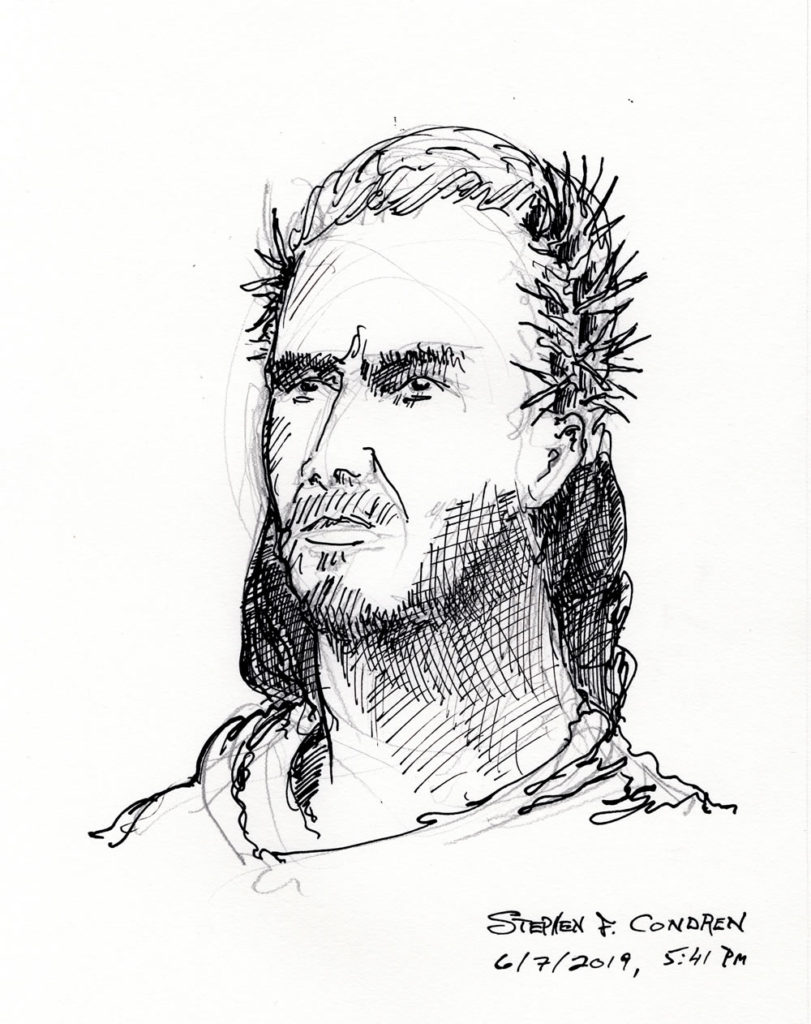

Philosophy
A most important factor to be raised in this arena is the use of Western Philosophy and the words of Western Philosophers and Theologians. Having live in Japan on board the USS Midway, and having learned Japanese and traveled all over Japan, I have learned first hand the radical difference to human thought and approaches to it. Now put the concepts of revelation before Tokugawa Ieyasu and see what you find! Western philosophical thought just is not the last word in understanding revelation.

Kant, Descartes, and Hume have much to offer but not in context of modern Western life. The approaches to these figures should be that of reference rather than resource. For given the statement that knowledge is power shall we turn to Friedrich Nietzsche whose views on God are anything but dead. Further, the thoughts of Post-Critical Philosopher Michel Foucault clearly and in a clinical way that I give hardy approval to, offers a fresh and wholesome perspective to Philosophy below the surface, thus freeing us with false notion of being relational creatures. Albert Schweitzer was wrong when he said that he was a rationalist for that cannot ever be attained in any human being. He may have loved Kant but that does not mean he was rational.
Albert Schweitzer’s seminal book “Geschichte der Leben-Jesu-Forshung” (Quest for the Historical Jesus) remains for me to this a day a turning point in my Spiritual life, and I will always be indebted to him for his great works, and even greater visions.
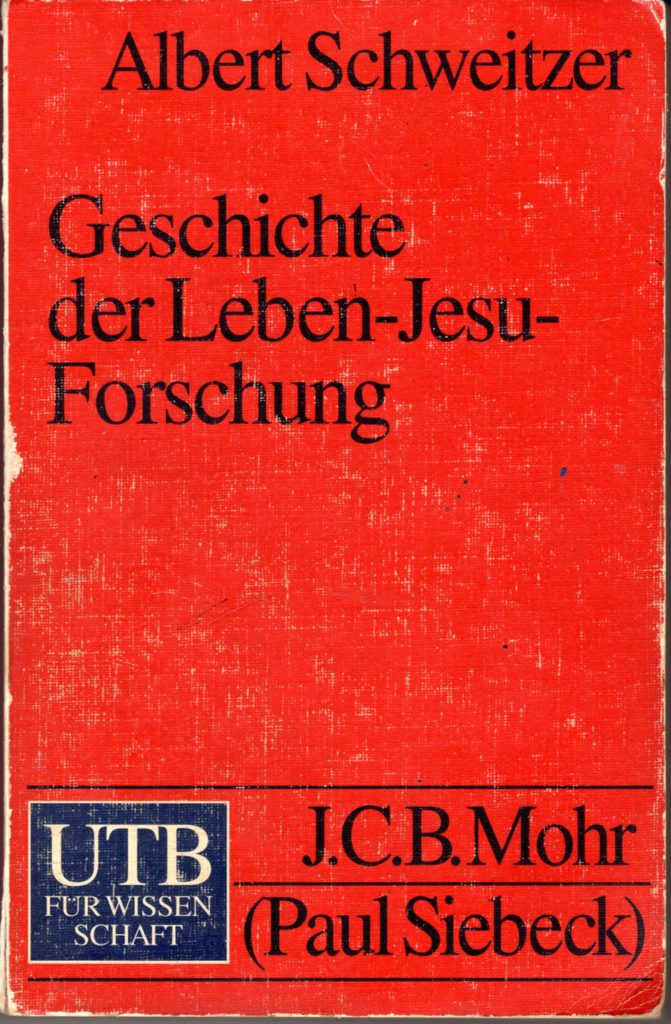
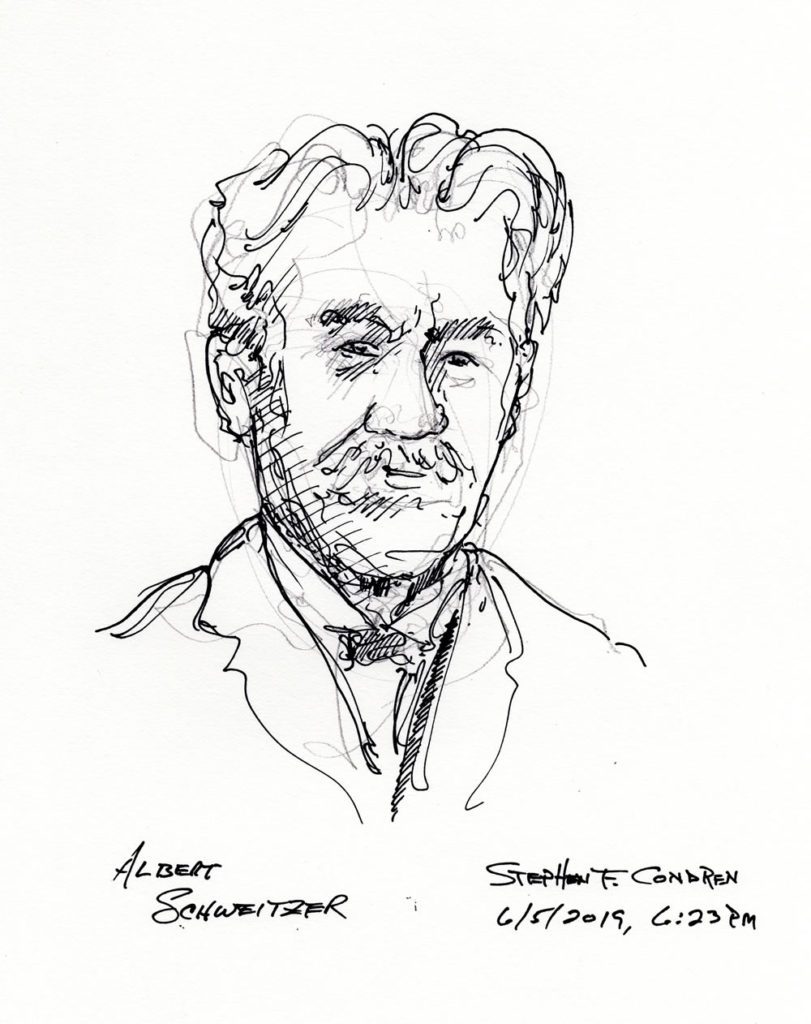
LBGTQ
What was Jesus sex life? Was Jesus Gay, Straight or Bi-sexual? Jesus seemed to be almost permissive with sexual activity. In John 8:11 “Nor do I condemn you; go your way; from now on sin no more.” NASV. So what was the sin? The sex act? The taking of money for sex? Committing adulatory with married men? There has been much speculation on a sexual relationship between Jesus and St. John the Beloved. To even juxtapose this kind of relationship between two men at this time, and place give good credence to a homoerotic relationship between the two men. We need to address these issues here and now, and their impact and meaning for the LBGTQ Community?
Jesus And Sex
I have always found difficulty in personally identifying with Jesus due to his sex life or rather, lack thereof. Did Jesus ever have an erection? Jesus ever masturbate? Did Jesus ever have wet dreams, look at dirty drawings, read dirty stories, tell dirty jokes like normal healthy boys? To not do so is a sign of a warped and unhealthy child. That would be the diagnosis of any doctor. These are not trick questions, but rather sound clinical ones. I find it very difficult for me to picture Jesus getting naked with another man or woman and engaging in healthy, spirited, sexual activity like normal, healthy, people do. Jesus clearly fails the test of being a human male if He does not participate in any of these sexual activities for that would mean that “The Word was not made flesh”.
Related Links
Stephen F. Condren

